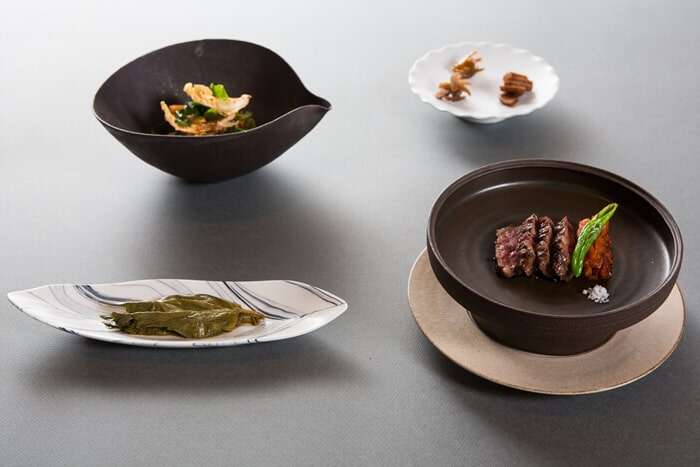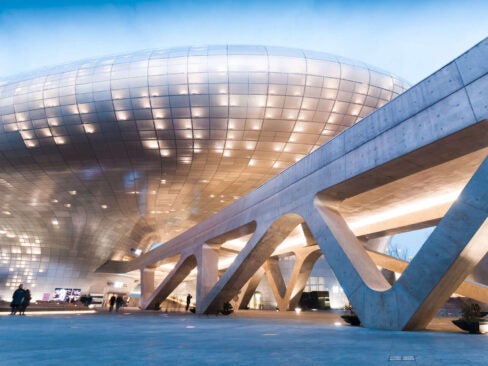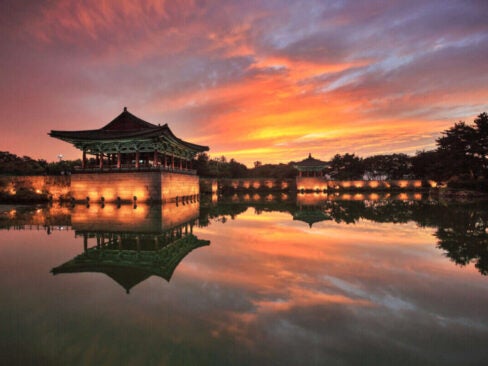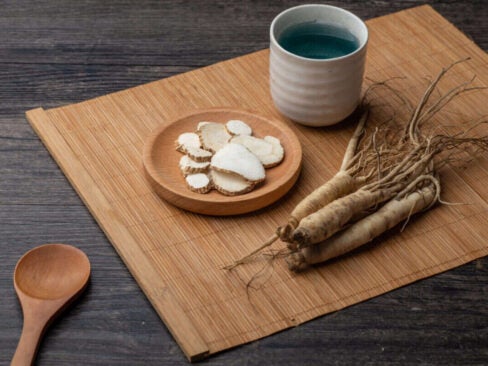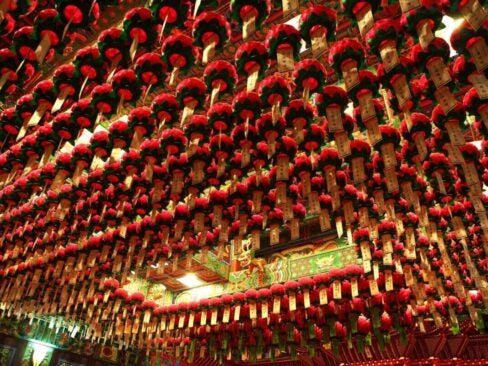From the explosion of K-pop, to the rise of its vibrant art scene, Seoul is riding high on the global stage. Surrounded by mountains and dotted with ancient Buddhist temples, old meets new in South Korea’s capital: a city that never sleeps.
But for those lucky enough to visit, it is perhaps Seoul’s culinary delights that are the star of the show. The city’s fine dining scene is home to over 30 Michelin-star establishments, blending centuries of tradition with international influences and modern techniques. As a result, the best restaurants in Seoul deliver a truly unique dining experience that elevates authentic Korean flavors to dizzying new heights.
“The capital is slammed with marvelous gourmet restaurants, and at the same time, small teahouses and street food are abundant,” enthuses Andrew Evans, travel writer and National Geographic TV host, reflecting on his recent trip to Seoul. “You can pretty much get anything you want any time of day or night.”
The television writer and producer behind Everyone Loves Raymond, Philip Rosenthal, was also struck by the diverse nature of Seoul’s cuisine when he visited the capital to film an episode of his Netflix show, Somebody Feed Phil. “Living close to Koreatown in Los Angeles, I was expecting the best versions of the Korean cuisine I’ve come to know, and I got that,” he says. “But then I was introduced to so many Korean dishes that were new to me, plus delicious food from everywhere, because of course, Seoul is a world city.”
With this abundance of choice, deciding where to begin can feel overwhelming. Consider contacting former hotelier, Korean cuisine evangelist and founder of Gastro Tour Seoul, Veronica Kang, to arrange a private culinary tour of the city; visit Noryangjin, one of the world’s largest fish markets; immerse yourself in the unique food and drinking culture of the city’s Jongro district; seek out some of the hippest eateries on the city’s West Side, and be sure to experience a traditional Korean teahouse.
Here, we take a look at some of the best fine dining restaurants Seoul has to offer, showcasing the very best in traditional and cutting-edge Korean cuisine.
La Yeon
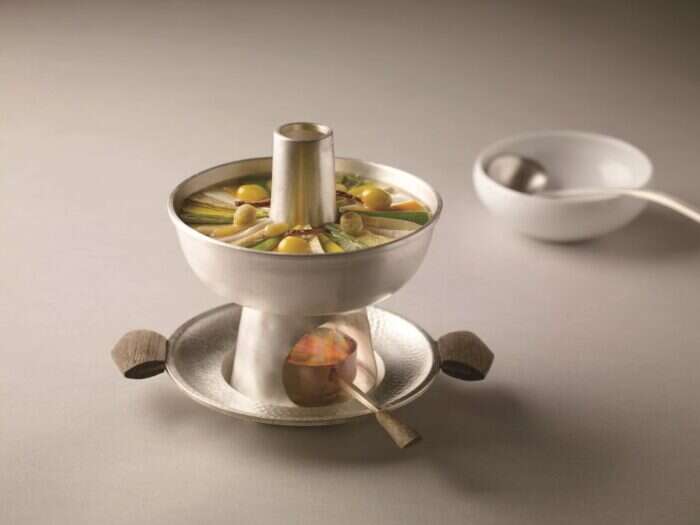
Chef Kim Sung II prepares authentic Hansik cuisine with a contemporary touch / ©La Yeon
Located on the 23rd floor of the five-star Shilla Hotel overlooking Namsan park, La Yeon was South Korea’s first restaurant to be awarded three Michelin stars. Head chef, Kim Sung II, prepares authentic Hansik cuisine with a contemporary touch. Addictive seaweed crackers and dried sliced jujube (Korean red dates) are served at the start of the meal. Diners can choose from two tasting menus: the 10-course ‘Feast’, which includes seared beef rolls and seasonal fish, and the 11-course ‘Shilla’, featuring hanwoo beef for the main course, served with slivers of radish and pine nuts. Expect crisp white tablecloths, attentive but unobtrusive service, perfect wine pairings and spectacular views of the city.
Gaon
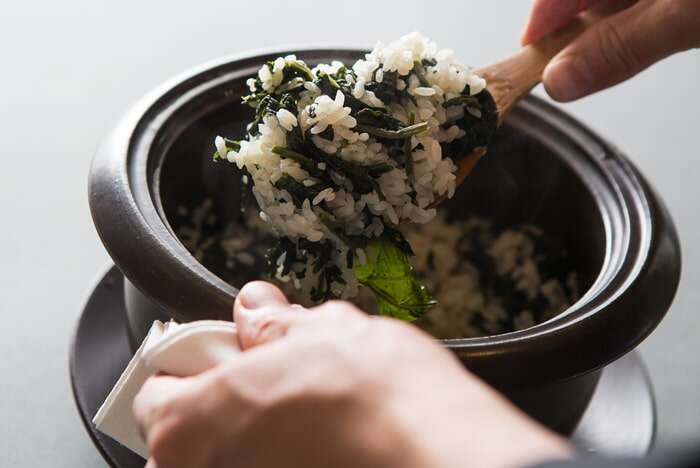
Chef Kim Byoung-Jin uses fresh seasonal ingredients and local produce / ©Gaon
This Gangnam-based three-Michelin-star restaurant uses an abundance of local produce and fresh seasonal ingredients to celebrate traditional Korean cuisine. Chief executive chef, Kim Byoung-Jin, has been at the helm for over 15 years, creating elegant, thoughtful dishes inspired by the country’s rich history. The three-story restaurant is minimalist in design and the food is served on beautiful, handcrafted crockery specially designed by distinguished Korean potter, KwangJuYo. Delicious signature dishes from the set menus include radish kimchi with oysters, lobster naengchae, mint dumplings, grilled eel and hae-mool pajun – a thick pancake filled with scallops, squid and octopus.
gaonkr.com
Mosu

The contemporary entrance to Mosu / ©Mosu
In 2017, head chef Sung Anh decided to move his renowned two-Michelin-star restaurant, Mosu, from San Francisco to the north side of the Cheonggyecheon River to be closer to his family. Born in South Korea, Anh grew up inspired by his grandmother’s traditional North Korean and Japanese style of cooking adopted during the Japan-Korea annexation. The talented chef uses modern techniques to create original plates of food that elevate the best of South Korea’s seasonal produce. Anh’s signature dish, Burdock bark, features a single dehydrated burdock root crisp coated in syrup. Other highlights from the menu include roasted sesame tofu in dashi, toasted acorn noodles and turbot with fermented vegetables.
mosuseoul.com
Kwonsooksoo
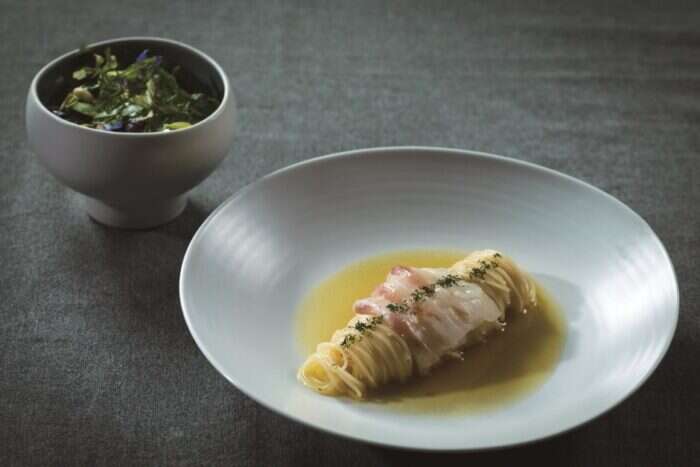
Classic Korean dishes are reinterpreted to create refined plates of food at Kwonsooksoo / ©Kwonsooksoo
Head chef Kwon Woo-Joong delicately reinterprets classic Korean dishes to create refined plates of food that incorporate rare and precious seasonal ingredients sourced from select producers. His specialty is making everything from scratch, from Korean paste and soy sauce, to Kimchi and Jang-a-chi (Korean pickle). In homage to traditional high-end Korean dining culture, guests eat from a dok-sang – a small single table placed on top of the conventional table. Highlights from the two-Michelin-star restaurant’s tasting menu include snow crab meat with Korean Osetra Caviar, morel mushrooms stuffed with striploin and served with a pine nut foam, and the famous grilled beef tteokgalbi. Make sure to sample Kwonsooksoo’s carefully curated wine list and selection of traditional Korean liquors.
Hwanggeum Kongbat

Hwanggeum Kongbat specializes in rustic homemade bean curd, freshly made each morning / ©Hwanggeum Kongbat
This year, the Michelin Guide introduced its Green Star. The new distinction is awarded to restaurants that have made exceptional efforts to champion sustainable producers and practices. Hwanggeum Kongbat was one of two Seoul-based restaurants to scoop this coveted prize. Located in Ahyeon-dong, the establishment specializes in rustic homemade bean curd, freshly made each morning. Using ingredients bought directly from local sellers, the menu includes fish caught off Ikki Island in Tongyeong, pork from Jeju island and beef from the Sobaeksan Mountain. Any leftover pureed soybean is collected and sent to farmers to be reused as animal feed to minimize food waste.
A Flower Blossom on the Rice
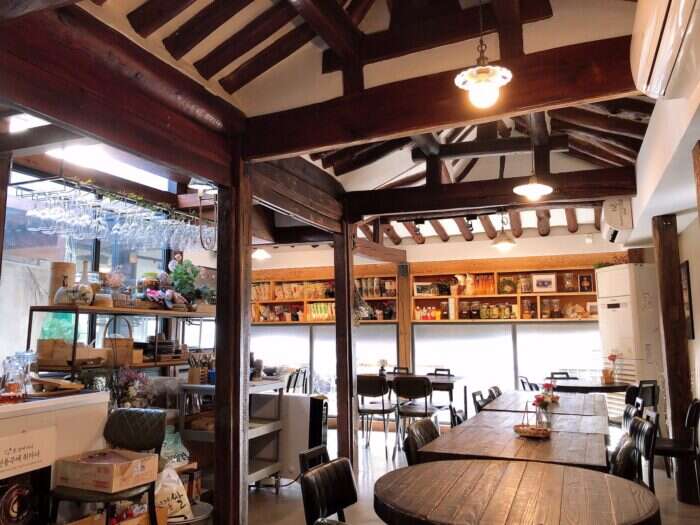
The laidback interiors at A Flower Blossom on the Rice / ©A Flower Blossom on the Rice
The other establishment in Seoul to receive the Michelin Green Star is A Flower Blossom on the Rice. Located in a quiet alley in Insa-dong, beautiful flowers, vegetables and herbs are planted in pots outside, in keeping with the restaurant’s mission to make the most of local produce. Ninety-five percent of ingredients come from regional farms that are certified organic, sustainable and pesticide-free. Traditional hand-made jang (Korean fermented soy sauce) is used to avoid chemical seasoning. One of the most popular dishes not to be missed is Bojagi Bibimbap: steamed rice and an assortment of sautéed vegetables, delicately wrapped in a layer of egg omelet and tied with a seaweed ribbon.
For more information on the best restaurants in Seoul, visit the Korea Tourism Organization






